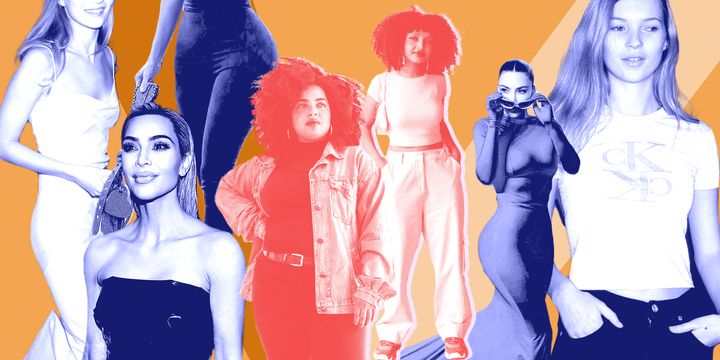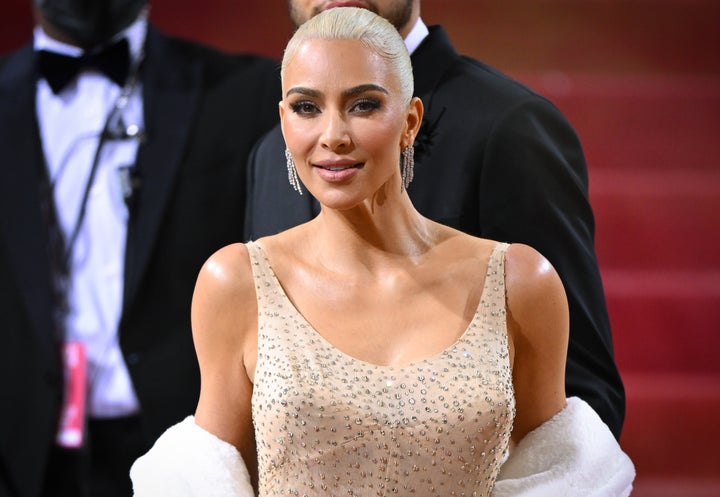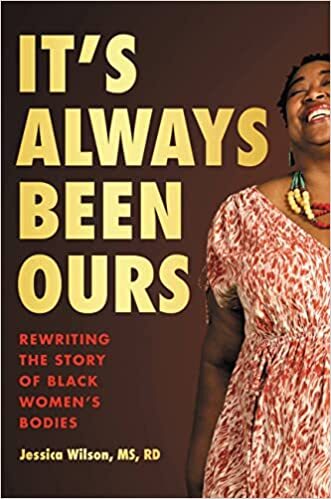
In a world of body trends, it’s hard to keep up. What constitutes the ideal body shape is constantly shifting, piling pressure on women to look a certain way.
In recent years, the BBL – or Brazilian butt lift – has reigned supreme, in a shift from the early to mid 2000s when we saw slim bodies championed. This has been driven in no smart part by the Kardashians. The popularity of Kim and her sisters’ Instagrammed curves led to BBLs trending around the world.
Despite the Kardashians denying they’ve ever had surgery, women from varying economic and racial backgrounds have wanted to keep up with them – even if this means dying in the process (according to the NHS, the Brazilian Butt Lift is the riskiest of all cosmetic procedures, with women at least 10 times more likely to die from the procedure compared to other surgeries).
And Black women have been taking note. “Bigger bums, booties, and bottoms (however you prefer to describe the derriere) may have always been held in high regard within Black communities, yet over the past few years, it’s impossible not to have noticed the uptick in conversation about bootylicious booties in mainstream beauty,” wrote journalist Ata-Owaji Victor, reflecting on the end of the BBL-era in July this year. Because body ideals are on the move again.
At the start of November, a now infamous article in the New York Post declared the return, not of noughties slim, but an earlier body trend.
“Bye-bye booty: Heroin chic is back,” the headline declared – leading to a chorus of backlash from many quarters. Heroin chic was the label given to a certain fashion aesthetic that circulated in the early 1990s, a look characterised by pale skin, dark eye circles, stringy hair and extreme thinness.
Celebs, influencers and regular social media users have all come out to say how dangerous and triggering it is to read about it again.
Actor Jameela Jamil is one of them. The I Weigh founder said she was mortified to see the trend re-emerging. “‘Heroin Chic’ had my generation in a chokehold,” Jamil wrote in Paper Mag this week. “Most of us still haven’t fully recovered. I barely made it out alive myself.”
TV presenter Fearne Cotton also spoke up about how triggering she found the discussion, having struggled with bulimia for 10 years. “The female body has long been discussed and obsessed over and what we must remember is to never shame any physical body,” Cotton said in an Instagram post.
Nevertheless, there has been an undeniable change in how some celebs are looking, with Kim and Khloe Kardashian both seeming slimmer than before.
In May, Kim ruffled feathers when she spoke up about losing 16 pounds in three weeks to fit into a vintage Marilyn Monroe dress for the 2022 Met Gala – a controversy she says she predicted. According to some observers on social media, the sisters are flaunting more of an early 2000s model look.
Cosmetic surgeon Dr. Roberto Chacur, an expert in the Brazilian Butt Lift procedure, agrees that some women who previously favoured a curvier look – including the Kardashians – are now opting for something slimmer.
“Having voluptuous bodies was a thing five, seven years ago,” Chacur commented. “But now we have this search for [the] slim and harmonic body.”

For Black women, this isn’t a surprising development. There were predictions the Kardashians would eventually tire of the BBL aesthetic and opt for a slimmer look. But now we’re watching this happen in front of our eyes, some argue the reality TV star is seeking to be re-accepted into white society.
Though Kim is a white woman, during her six-year marriage to the rapper Kanye West, she appeared noticeably more tanned and curvy, in what some Black women saw as an appropriation of their bodies and culture (a view she has rejected). Her more recent transformation has been interpreted as a distancing from this, though others suggest that since BBLs are now more accessible, the star and her sisters simply wish to stop looking like everyone else.
Of course, we can’t really know the motivations behind celebrity style choices, and perhaps this isn’t the point. Regardless of what body trends are “in”, Black women end up suffering.
History reminds us of this. In the 19th century, Sarah Baartman, a Black South African women, was brought to Europe to be paraded as the Hottentot Venus in freak shows for her large buttocks. Forced to sing and dance to white crowds, she faced unbearable objectification and was described as “grotesque” – purely due to the way her body looked.
Fast right forward to the early 2000s, and in the wider white community, having a big bum was still not seen as desirable, despite this being the opposite case in many Black communities.
In fact, as someone who grew up naturally thin, I can say that being skinny in the Black community isn’t something that’s praised. I spent my teen years buying protein shakes to try to make myself thicker. I constantly compared myself to my older sister and mother, who are naturally bigger and curvier, feeling less attractive and not ‘Black’ enough.
“My size was a constant source of insecurity growing up.”
- Yomi Adegoke in British Vogue
I’m not alone. Author Yomi Adegoke wrote in British Vogue of her own attempts to gain weight to emulate the curvaceous women she saw in rap and R’n’B music videos. “My size was a constant source of insecurity growing up,” she wrote. “The eventual slowing of my metabolism and weight gain so many fear as they get older however was welcomed by me with open arms.”
But as Kim Kardashian and her family rose to fame on our TV and phone screens, it was the white community that changed its tune on body shape. Suddenly being curvy was something to aspire to. In 2014, the reality star (and her bottom) famously appeared on the cover of Paper magazine to “break the internet”.
You could argue the Kardashians made curvy bodies more acceptable – but their body shapes weren’t anything new to women of colour.
In fact, many saw Kim’s curves and, separately, the bodies of BBL-enhanced celebs and influencers as a false representation of women. BBL bodies are rarely shown with hips, cellulite, stretch-marks or chubby stomachs – they’re made to look picture perfect, putting pressure on real plus-sized women.
In a recent TikTok video, creator Diana Simumpande shared her observation that “being white and skinny is in again”, referencing a range of celebrities, including Kim Kardashian, Ariana Grande and Miley Cyrus, who she believes have moved away from a more Black aesthetic to a whiter one.
“So, what’s the issue here?,” asks Simumpande. “I’m a Black woman, and I can’t escape being a Black women to escape discrimination, get preferential treatment, to meet certain goals, to even escape the police. But is it fair that non-Black people get to put it on and take it off?”
Georgina Afuape, a 27-year old account executive from Kent, thinks the idea Kim Kardashian made curves acceptable does a disservice to Black women everywhere.
“Why is she seen as the person who invented curvy bodies when Black women have always looked like this?” Afuape asks. “What’s even worse is that people were trying to get her exact body type, which is scary, but she’s set an unrealistic body standard for women.”
Though Afuape is fairly confident in her body now, she says this hasn’t always been the case. “I grew up in a predominantly white area, and my peers would always tell me I had a big bum even though I felt like I didn’t,” she says. “It just reinforced this idea that my body as a Black woman has to look a certain way.”
So much so that in 2021 she had a non-surgical bum lift. This involves using a vacuum massage to tighten the skin. Afuape’s friend had recently learned the procedure, so it cost her only £40, but this can otherwise set you back up to £90 per session. “I just wanted to try it and see what it looked like, but I was amazed at the results,” she says.
Afuape remembers a time where scrolling Instagram would make her feel bad about her body, so she decided to log off and spend less time on social media, and says she now feels better in herself, and her body. “I think as I’ve gotten older now, I would say that I’m less pressured to look a certain way,” she says.
Jessica Wilson, 40, an eating disorder specialist, community organiser and co-host of the My Black Body podcast, believes Black women getting BBLs is another example of trying to make our bodies conform to what society expects of us.
“In the case of BBLs, Black women were trying to look like white women who were trying to look like Black women, which is ironic,” she tells HuffPost UK.
“Black women’s body stories have never been ours to own. And by conforming to societal norms we can find survival and safety. ”
“If body positivity was enough to get us to liberation, the discussion of heroin chic would be dead by now.”
- Author Jessica Wilson
Wilson thinks white supremacy is the primary factor that influences the way Black women view their bodies, a subject she touches on in her upcoming book, It’s Always Been Ours: Rewriting the Story of Black Women’s Bodies.
“White supremacy continually tells us that our bodies are too much and spill outside the boundaries of what is acceptable,” Wilson says.
“So even before ‘heroin chic’ was thought to resurrect itself, Black women have consistently been looking for ways to make our bodies less of a threat. Restriction and overexercise are one way to achieve this.”

Wilson argues that thin bodies never actually went out of style. “We see them at fashion weeks, in film and television, in Peloton instructors, and in popular culture. Bella Hadid and those like her have been around for years and get praised for their appearance,” she says. “It’s not a trend.”
And fatphobia is still rampant, even within the Black community. The curvy body type is often held up as an ideal, leaving plus-sized women feeling undesirable.
So, where does this leave Black women? Sure, we should detach ourselves from what society wants us to look like and try to feel comfortable in our own skin, but this is easier said than done. As Yomi Adegoke summed it up in Vogue: “When women’s bodies are perceived as trends and given the same treatment as clothes, there are no winners, except dieticians and plastic surgeons.”
Reflecting on recent conversations, Jessica Wilson says: “The discussion of ‘heroin chic’ really demonstrates the limits of body positivity, popularised in the last decade.
“The idea that people can think themselves into feeling better about their body has shown itself to be untrue, as evidenced by the number of people triggered by the discussion of heroin chic. If body positivity was enough to get us to liberation, the discussion of heroin chic would be dead by now.”
As for me? I want Black women to release themselves from the idea that our bodies are supposed to look a certain way. Is plastic surgery or losing/gaining weight wrong? No, but if you spend your life chasing body trends, you’ll be changing your body every few years. Instead, let’s focus on forging a healthy relationship with the bodies we do have – whatever yours looks like to you.
Help and support:
- Beat, Adult Helpline: 0808 801 0677 and Youthline: 0808 801 0711 or email help@beateatingdisorders.org.uk (adults) fyp@beateatingdisorders.org.uk (youth support)
Samaritans, open 24 hours a day, on 116 123
Mind, open Monday to Friday, 9am-6pm on 0300 123 3393